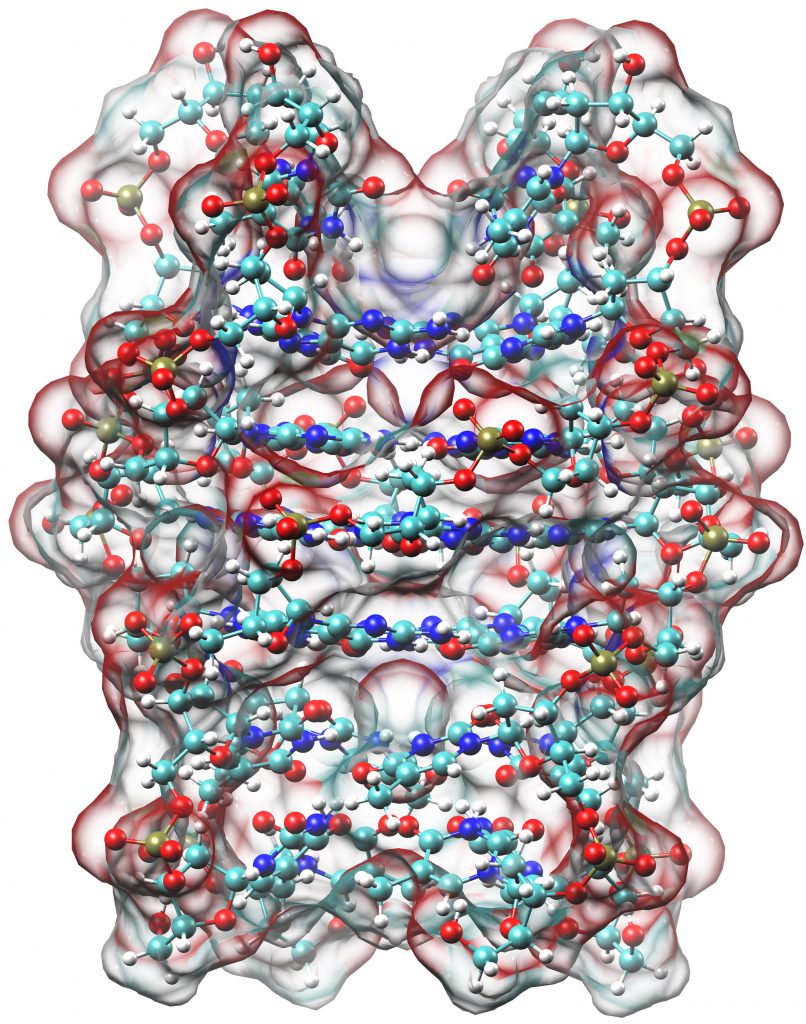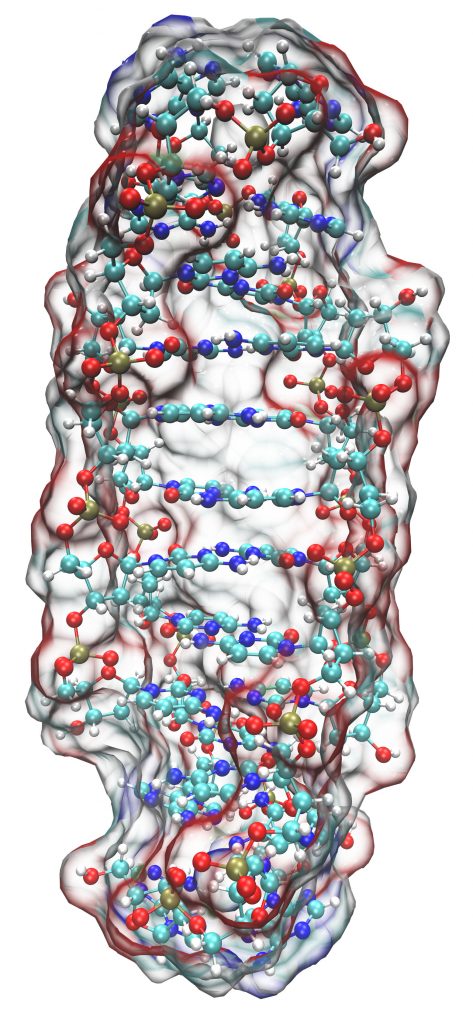If the information artificially written in DNA can be used as a gene, it is in the realm of biotechnology. We have succeeded in completely synthesizing a plasmid, which is often used for genetic recombination of cells, by a special PCR (protrusion end-generating PCR) method (ChemBioChem, 2008, 9, 2120), and have developed a very simple genetic recombination method (one of the ligation-independent cloning (LIC) system) that does not require further enzymatic reactions (Molecules, 2012, 17, 328).
→Creating artificial life
On the other hand, the mechanism by which a DNA strand forms a double helix while accurately identifying its partner according to the sequence information written on it can be used as a molecular glue to assemble biomolecules and molecular materials with various functions to a higher level. Furthermore, by utilizing our DNA computing and DNA nanotechnology technologies (→ Programming DNA), it is even possible to add intelligence to the molecular glue. In this way, we are using DNA to control the “molecular motors” that work inside cells in the following joint research project.
→Creating molecular robots
→Creating artificial muscles

We are not only using the famous DNA double helix. Some DNA strands with special sequences are known to be able to form DNA triple strands, in which the third strand is entangled in the double helix, and DNA quadruplexes, in which four strands are symmetrically entangled. In particular, one of the DNA quadruplexes, “G quadruplex” (shown on the right), is formed very quickly with the aid of Na+ and K+ by having at least three G’s in a row, and is much more stable than the double helix. By utilizing G quadruplexes, which are abundant in the telomere region at the end of chromosomes in nature and are thought to determine the lifespan of cells, we have recently developed a hydrogel material (= DNA Quadruplex gel) that instantly gelates upon sensing body fluids (Patent No. 6562410, Chem. Asian J., 2017, 12, 2388).
This DNA quadruplex gel, which has been confirmed to gelate not only in the presence of saline but also in artificial sweat, saliva, tears, and even in liquid medium for cell culture, is prepared using has already been widely used as an additive in cosmetics, etc., rather than in solid-phase synthesis of nucleic acids (→ Synthesizing DNA) using a common automatic DNA synthesizer. By utilizing the DNA liquid-phase mass synthesis method using polyethylene glycol (PEG) as a carrier, it is now possible to synthesize thousands of times more DNA-containing materials. It can also be formed into beads and strings.

This DNA quadruplex gel, made of only PEG and DNA, is not only the ultimate body-friendly material, but also
-DNA is naturally occurring and “biodegradable”.
-It is “intelligent” because it can utilize DNA computing technology.
-The formation of guanine quadruplexes is reversible, making it self-healing.
By using i-motif, another DNA quadruplex consisting only of C (right figure), it is possible to create a material that specifically gels in a weakly acidic environment, which is the pH of healthy skin (ACS Macro Lett., 2018, 7, 295). We are planning to apply these hydrogel materials to living organisms and investigate their pharmacokinetics when injected into mice, in collaboration with pharmaceutical companies, cosmetics companies, and medical and pharmaceutical schools of other universities.
→Creating DDS carriers
→Creating artificial organs
→Back to “Research Topics“